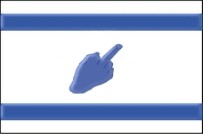This story, if it weren't a true one, could have served as a basis for a great joke. It started with an article, published by G.G. Kotova on a site dedicated to study of pre-Slavic civilization, having in mind to establish Etruscan - Russian links and common roots.
The article is concerned with translation (or, rather, decryption) of a text on a stone found in the area of city of Pskov. Here is the stone:
The author of the article, Dr.* Kotova, immediately assumed that the text is written in a mix of archaic Russian dialect and ancient Greek (no pun intended). I am skipping the fairly long reasoning behind this assumption, moving to the next stage. But if you know Russian, go ahead and enjoy the fine print. The text on the stone looks like this after being copied on paper:
To transliterate the text into Russian, the following matching table was used:
And here comes the result in Russian letters:
1. ЛЕТОСЬ ДРАЛИСЬ на МЕ-
2. ЖЕ, ПАВЕТКИ : ЛЕТОСЬ ЛИХОДЕ-
3. И на ОПУШКЕ ЛЕСА СЕКОМ УБИЛИ, ГОРЕ МНЕ,
4. ЛАСУ. СЫН любил ЦЕЛОВАТЬСЯ И ЛАСКАТЬСЯ.
5. ЛИЛИСЬ СЛЕЗЫ, ЛИЛИСЬ.
6. БОГ ЛИЛ.
Mind you, the resulting Russian words are declared to be belonging to ancient Russian and most of them pass through additional crunching in the article, so my attempt to translate it into English definitely pales compared with the origin. But I tried, so here:
1. Last year they fought on the property line,
2. Whining last year about the evil-doer -
3. And killed with an axe on the forest edge, woe to me.
4. Sweet toothed, my son loved to kiss and to cuddle.
5. Flow tears, flow.
6. God poured.
Well, that will be it for the story. Aside of them Jews, who came into the picture and spoiled the discovery and the related linguistic analysis. You see, they (the Jews) just had to turn it all upside down. Starting with the stone, which, when turned upside down, looks like this:
And the author of that last article, Igal Zamir from Israel, offered a very simple explanation: this is a gravestone**, inscribed in Hebrew, carrying the following text: "Here rests humble Chaia-... daughter of Yitzchak, year 1920, may her soul be bound in the bundle of life". A standard Hebrew text, roughly etched in a hard granite gravestone, is all.
Mr Zamir was so pissed off by the story that he offered a whole lecture on genealogy of Hebrew alphabet and a politically incorrect conclusion I shall avoid translating here. Needless to say, the Russian Internet carries a lot of comical responses to the Etruscan debacle. But it must be stated that Ms Kotova found it in herself to publish a retraction, even somewhat humorous, of the previous article. Good.
Is there a lesson in this story? Hardly, aside of Etruscan-Russian relationships being still somewhat unclear out there is the fog of history. But one shouldn't lose hope...
(*) Ph.D. in chemistry, as it appears. But specializing in the study of Etruscan language, probably in her spare time.
(**) There is another, very sad story about the destruction of Jewish cemeteries during the WW II, but this is not the place for it.






8 comments:
Heh :)
Does the year 1920 refer to Christian Era or to the Jewish Era?
Seriously funny. What a dingleberry.
Etruscan? Oh well, a somewhat later civilization? No, of course not, much earlier, definitely prior to 1920, so there is the origin of the error!
CE. A very recent grave.
Uhu...
Are you sure? Cause if you aren't... This could be huge. This Haya must have been older than Moses.
;-)
Post a Comment